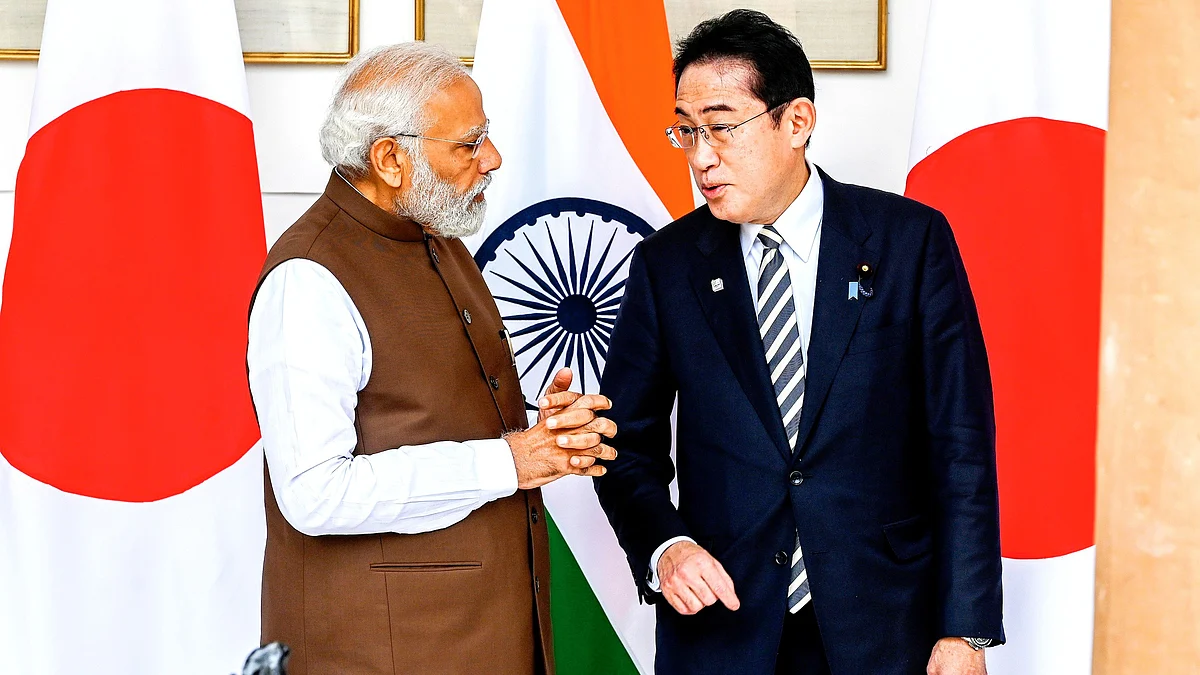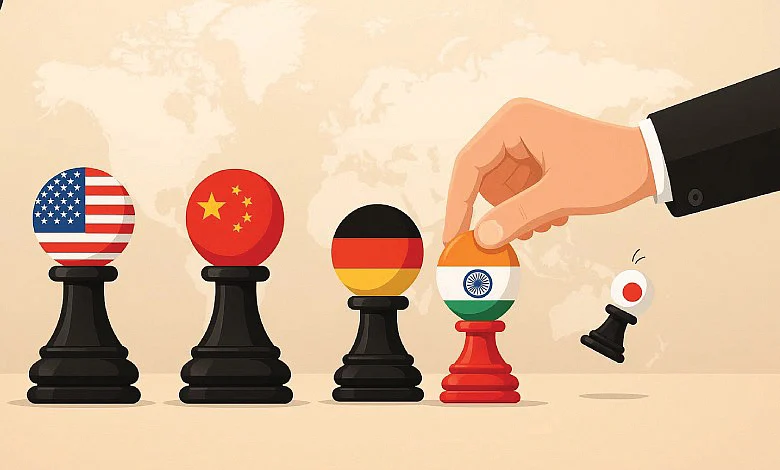India vs Japan: stats hide the grim reality
Big numbers, bigger headlines — but for most Indians, the so-called economic rise remains just a mirage

Recent claims by Niti Aayog and Prime Minister Narendra Modi that India has become the fourth-largest economy, overtaking Japan, are based on IMF projections for end-2025. According to these estimates, India’s GDP may edge past Japan’s by a razor-thin margin of $0.586 billion, or 0.014 per cent. Given the questionable accuracy of India’s own GDP data, this celebration — with the PM declaring at a rally in Gandhinagar that “we have now left Japan behind and moved ahead” — is premature and potentially misleading.
But why the hurry? And why make an inaccurate claim? Is this an image building exercise post-Operation Sindoor? Globally it is believed that India succumbed to President Trump’s pressure to accept ceasefire. His announcing the decision before the Indian spokesperson lends credibility to it. Also, a ceasefire is a political decision and not something DGMOs decide.
Skewed distribution
Be that as it may, for those in the bottom half of the income ladder, what is the significance of India overtaking Japan’s GDP? In 2025, India’s population is expected to be 1.46 billion. That is 12 times that of Japan’s projected 0.123 billion. This means when India’s GDP equals that of Japan in end 2025, the per person income will be one-twelfth of Japan’s. In other words, an average Japanese would be 12 times richer than an average Indian. And this reflects in international rankings — India is ranked 140 while Japan is placed 34 in terms of per capita GDP.
The average income also does not reflect the true picture of welfare of a poor Indian, given the huge inequality. Japan is a much more equal society. The top one per cent had an income share of 8.44 per cent in Japan while in India they had 22.6 per cent. The bottom 50 per cent had a share of 20 per cent in Japan as against 15 per cent in India. In other social indicators too, like education, health and longevity, civic amenities or technological development, Japan is way ahead.

Japan also has much lower levels of unemployment compared to India. Japan’s labour force participation (LFPR) rate is around 63 per cent while India’s is around 56 per cent officially, but as per CMIE (based on ILO definition) it is a lot less. India’s official LFPR is low, and even worse for women and educated youth.
The unorganised sector — small businesses, farmers, micro-enterprises — continues to be actively crushed through policies like demonetisation, structurally faulty GST and forced digitisation. The very sectors that provide mass employment are being destroyed in the name of formalisation and ‘reform’. The result is greater inequality and shortage of demand which slows down the organised sector itself.
The Union Budget favours the organised sectors by promoting the capital-intensive sectors that benefit it. Government capital expenditure has increased since the Covid-19 pandemic with big allocations to highways, railways, power, etc. These are capital-intensive and offer little employment. Meanwhile, social sector spending on programmes like MGNREGS, education and rural development has seen cuts, worsening the conditions for the poor.
The government has claimed that poverty has declined. This is based on the decline in multi-dimensional poverty, as calculated on the basis of the National Family Health Survey (NFHS) of 2015–16 and 2019–21. This is questionable since during the pandemic-hit 2020–21, all multi-dimensional poverty variables — education, health and welfare — were adversely impacted.
Also, poverty is estimated as per a poverty line. It was last defined for 2004–05 by the Tendulkar Committee. Poverty implies a ‘social minimum necessary consumption’. This changes in space and time. Since big changes have occurred in society since the early 2000s, a new poverty line is needed now. In its absence, the World Bank definition of $2.15 per person per day has to be used.
At current dollar–rupee parity, this poverty line translates to Rs 183 per person per day. For a family of five it comes to Rs 27,400 per month. A bulk of families in India have an income lower than this. So, possibly 90 per cent of Indian families are poor, if not extremely poor. The elite ruling class would like the poor to be grateful that they are above the extreme poverty line.
To assuage their conscience, the elite argue that the calculation should be based on purchasing power parity (PPP). This does double disservice to the poor. Because of their low wages, services are cheap and rupee appears to be stronger. Further, the poor don’t consume most of the services they provide cheaply and what they consume is mostly at international prices.
For the elite’s consumption, the rupee is stronger but not for the marginalised. Hence poverty should be measured in nominal dollars and not PPP dollars.
GDP errors
Beyond the above discussed problems of interpretation of data, GDP measurement is incorrect methodologically. With data for the huge unorganised sector being limited, the organised sector is used as a proxy.
This is flawed post-demonetisation. Since then, the economy has had four big shocks, each of which impacted the unorganised sector disproportionately hard. That is why the ‘discrepancies’ in GDP calculation have shot up. And, using a growing organised sector to proxy for a declining unorganised sector biases the GDP.
So, not only is GDP data in error, its growth rate and investment and consumption data are also in error. Consequently, India has not been the fifth largest and has not become the fourth largest economy in the world. Using IMF projections does not change these facts. Until we face the facts — inequality, marginalisation, joblessness, flawed data and elite-driven policies — these rankings are just empty trophies.
Arun Kumar is a retired professor of economics, JNU and author of Indian Economy’s Greatest Crisis: Impact of the Coronavirus and the Road Ahead
Follow us on: Facebook, Twitter, Google News, Instagram
Join our official telegram channel (@nationalherald) and stay updated with the latest headlines
